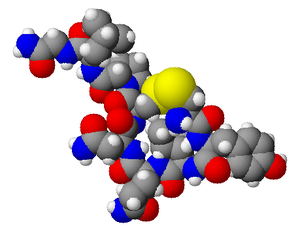Doctor plans novel treatment for autism

With childhood autism cases skyrocketing and no cure in sight, doctors at the Children's Institute in Squirrel Hill are planning on a Hail Mary pass approach to the mysterious disorder -- housing young patients for weeks at a time in a pollutant-free "clean room," in an attempt to detoxify their bodies.
No cause for autism has been found, and debates rage as to whether the brain development disorder is purely genetic or caused in part by environmental factors, including air and food-borne chemicals.
With roots in autism treatment theories that until now have lived mostly on the Internet, the pediatric clean room plan would be the first of its kind in a mainstream American hospital environment.
The Children Institute's Scott Faber, a pediatrician with several hundred autistic patients and a waiting list six months long, is one of the believers in toxic causes, and the institute is trying to back him with a multimillion dollar test of the novel theory.
Under the plans -- developed with help from Duquesne University -- autistic patients would live for more than six weeks in a 1,000-square-foot room kept mostly free of harmful chemicals and pollutants, using special air-filtering systems, ultraviolet lights and air locks on doorways.
Furniture, paints, toys and floor coverings would be designed to be toxin-free, and food, clothing and water organic and clean. Doctors would seek to rid patients' bodies of chemicals and boost their immune systems through natural means such as nutritional supplements and dietary changes.
Basically, it would be pushing a "reset" button on the child's body, with the hope of wiping autistic symptoms away.
"What we would like to do is have kids live in this wonderful environment where they are exposed to almost none of the Industrial Revolution. And we wonder, if the chemicals come out and the heavy metals come out, will the children start improving?" Dr. Faber said.
"Will they start showing signs of clinical improvement, such as language improvement and socialization improvement? Will they become less obsessive? Less fascinated?"
Autism is one of a group of developmental disabilities disorders that cause substantial impairments in social interaction and communication and are characterized by unusual behaviors and interests. Many people with these disorders also have unusual ways of learning, paying attention and reacting to sensation. Rates have greatly increased in recent years, according to the U.S. Centers for Disease Control and Prevention, though some of the rise may be due to changes in reporting and diagnosing the disorder.
Planning and fund-raising for the "Environmental Pediatric Room" is in the early stages, with the Alcoa Foundation awarding an initial $200,000 grant April 28. It will require an estimated $500,000 to fully design and at least $1 million in yearly operating support its first three years.
The 106-year-old Children's Institute (formerly called the Rehabilitation Institute) plans to fund the room through the $30 million capital campaign it launched in 2005, after buying out its Shady Avenue site from the University of Pittsburgh Medical Center. It completed an expansion last year that doubled its building space and its capacity, from 39 to 82 beds. Almost $24 million of the campaign total has been raised, with fund-raising for the clean room and other programs ongoing.
Clean rooms are common in high-tech manufacturing and research environments and have been used in hospital settings for patients struggling with infectious diseases and transplants. They have also been used to treat children with autism, but only in patients' homes, largely in work by Virginia researcher and nutritionist Karen Slimak.
Dr. Faber noted that Ms. Slimak's clean room work -- like much of the research on toxicity in autism -- "hasn't been written for the main [scientific] literature" but instead has been written mostly for the Internet. The Children's Institute plan would be taking what is arguably a fringe movement into the mainstream: It would be the first autism treatment of this kind staged in an American hospital setting. It will be matched with scientific analysis, sensors and video cameras to study the real impacts of detoxification. The data and findings will be shared openly, he said.
With so many doubts -- and so few answers -- about effective autism treatments among the growing community of families affected by the condition, the institute said openness is vital to the experimental method's success.
"We're not saying this is the full cause" of autism and related illnesses, Dr. Faber said. "Obviously there are multiple causes, and there are going to be found many genetic causes, many environmental causes and many genetic-environmental interactions. But we wonder -- we speculate -- that it's possible if we have children living in a unique environment that has not [previously] been created scientifically that we can make a difference.
Read more: http://www.post-gazette.com/pg/08132/880873-52.stm#ixzz0gNYLl2HY
Related:
- New study will investigate the influence of environmental factors in autism
- Novel treatment for autism uses 'clean room' | ScrippsNews



